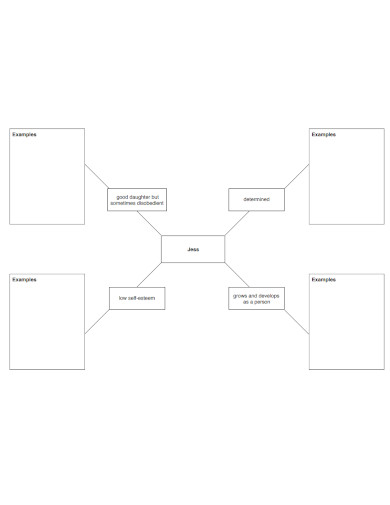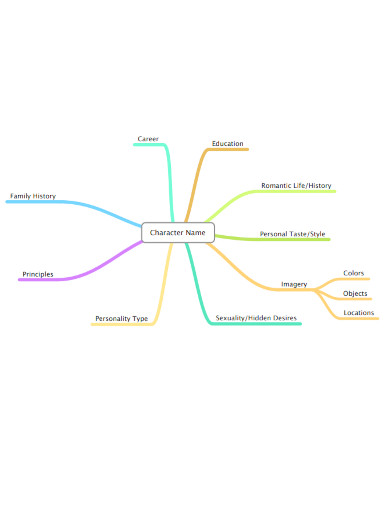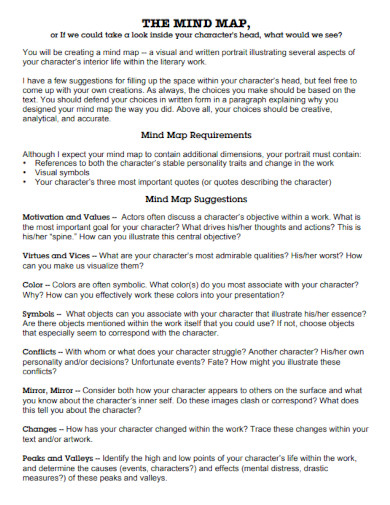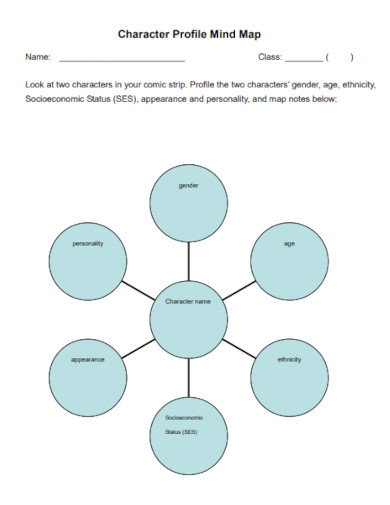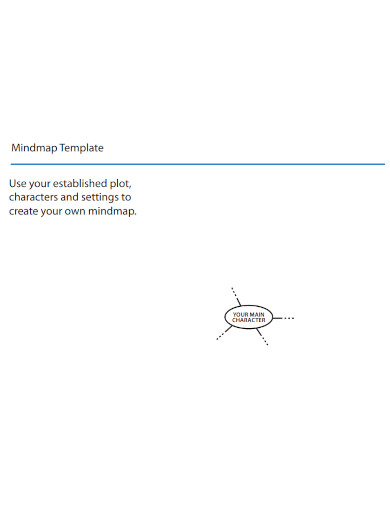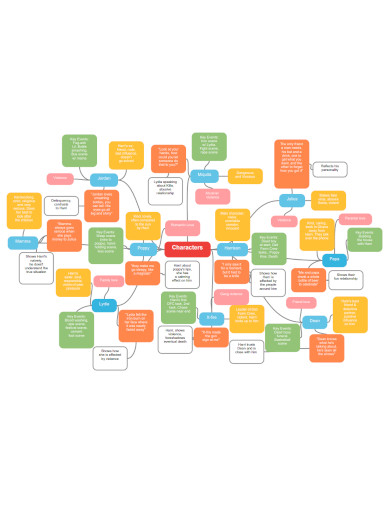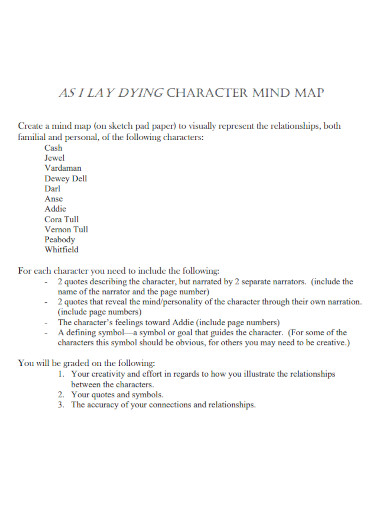Character development is vital in many literary works, particularly novels. The action and conflict in a tale are driven by the characters; they provide a cause for the story to exist. Character mapping may be as basic as having students fill in charts that monitor key elements of characters, or as sophisticated as recording traits that classify them as an icon. Three paragraph notes: distinct storyboards that capture a character’s sentiments, behaviours, and crucial conversation in three different portions of the novel are another wonderful usage for a sketch in character study.
10+ Character Mindmap Samples
1. Free Simple Character Mind Map Template
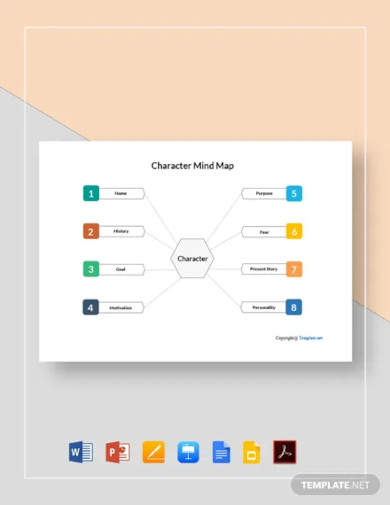
2. Character Sketch Mind Map Template

3. Character Education Mind Map Template

4. Character Mindmap Sample
5. Printable Character Mindmap
6. Basic Character Mindmap
7. Character Profile Mind Map
8. Character Mindmap Template
9. Professional Character Mindmap
10. As I Lay Dying Character Mindmap
11. Character Mindmap in DOC
What is a character concept map?
Usually, it’s best to begin with a large, central idea. Smaller data points can then be added around (and connected to) this idea, ensuring the larger point of your map remains clear. Your central idea might be a character, with their traits and history added around, or an event, with consequences arrayed and connected around it.
For your data points, circles on a page are the norm, but consider using sticky notes or cutting up index cards and either gluing them to poster board or keeping them movable on a bulletin board. I say to cut up your index cards because they should be small enough that you’re using brief keywords rather than full sentences.
If you’re using your mind map to explore rather than illustrate, consider branching out from your central idea with questions. About a character, you might ask ‘what do they want,’ ‘who do they love,’ ‘what is their biggest flaw,’ etc. Branching from these questions will be known answers and possible answers.
Remember that color is its own type of information. Start black and white (or in pencil) and then add color as common themes or ideas become clear. If you’re visual, draw pictures or copy-paste stock pictures in strategic places to give the map an aesthetic feel and cement concepts through visual representation.
Add extra lines as you go, drawing connections and making one-word notes along the connecting lines. Double back and loop around, adding smaller and larger circles depending on degree of importance. Basically, break the rules (or don’t start off with any!) to make this your mind map, not something you’d like to post on Instagram. Hey, if it ends up looking good, go for it; but don’t make that an end goal.
You can work chronologically – creating more of a timeline effect – or thematically, creating a slightly chaotic effect. In fact, the only rule about structure is that it should work for you. Both limited and unlimited mind maps can be useful. An unlimited mind map is a total brain dump, whereas limited mind maps put a single character or motif under the microscope.
Finally, remember to create a key if necessary. This is vital if you color-code information or use other visual cues; they’re clear now, but you need to make sure you’ll still understand your map months later.
FAQs
What are the benefits of a mindmap?
- Simplicity: Mind maps make your thoughts and ideas well-organized, thus allowing you to reach ultimate simplicity.
- Flexibility: You can rearrange and play with mind maps according to your own preferences.
- Focus: Visual presentations help you to concentrate and keep track of all elements of the story.
- Cure creative drought: Lack of inspiration is the worst thing that can happen to a screenplay writer. It’s not easy to find your way out of creative drought, but it’s much simpler if you use the mind mapping technique.
What are tools that are best to use to create a mindmap?
We live in the digital universe, so it’s natural to see so many mind mapping tools available online. Such platforms allow you to organize and reorganize ideas quickly and effortlessly. Some of the frequently used mind mapping solutions are Spider Scribe, Wise Mapping, and Mind Meister.
Related Posts
Retirement Speech Samples & Templates
Weekly Schedule Samples & Templates
Contractual Agreement Samples & Templates
FREE 9+ Amazing Sample Church Bulletin Templates in PSD | PDF
Sample Business Card Templates
Sample Cashier Job Descriptions
Questionnaire Samples
FREE 10+ Sample HR Resource Templates in PDF
FREE 49+ Sample Job Descriptions in PDF | MS Word
FREE 23+ Sample Event Calendar Templates in PDF | MS Word | Google Docs | Apple Pages
Company Profile Samples
FREE 10+ Leadership Report Samples [ Development, Training, Camp ]
FREE 24+ Sample Payment Schedules in PDF | MS Word
FREE 10+ Return to Work Action Plan Samples in PDF | DOC
Autobiography Samples & Templates

